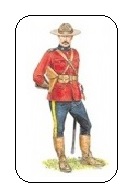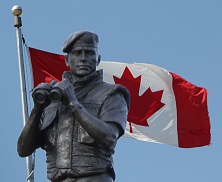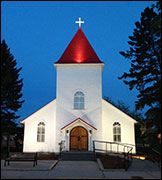True and Fascinating Canadian History
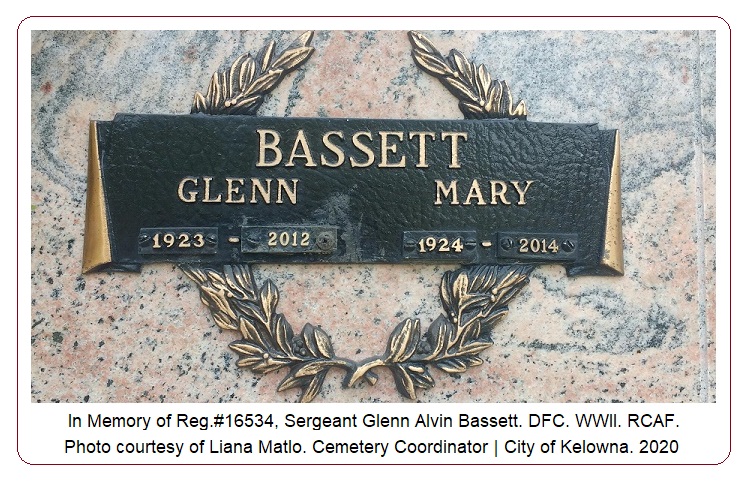
Vet of the Month: August, 2020
Reg.#16534, Sergeant Glenn Alvin Bassett. DFC
'Tail Gun Charlie'
RCMP Vets. Ottawa, ON

I am very appreciative to a dear 'ole friend, retired Staff Sergeant Reg.#17652 Ron Sheppard for his help with this short story. It is a tale about Ron's lifelong friend RCMP Sergeant Glenn Bassett who was once a Rear Gunner with the RCAF as well as a highly decorated Veteran of WWII. Glenn Bassett's service in the RCAF is a story of daring, danger and devotion to duty -- a flying career during war time which all began when he was very young. Considering the high number of causalities among war time Rear Gunners estimated to be in the thousands of deaths, one could say that it is only by a miracle that Glenn Bassett survived WWII and returned home to Canada. Yet, his skills as a Rear Gunner would also play an important part in Glenn Bassett's life, his survival and the survival of his crew.
Glenn Alvin Bassett was born in 1923 in Lucky Lake, SK. He enlisted in the RCAF on July 3, 1941. He was 18 years of age. Upon engagement, he was sent off for Basic Training at # 3 Manning Depot which was located in Edmonton, AB. He arrived in Edmonton on July 21, 1941.
After physical tests and medical exams, Basic Training Part I began from July 21, 1941 until August 31st 1941, and Part II continued until October 3, 1941 at which time Glenn Bassett graduated as a Leading Aircraftman (LAC). He was promoted to RCAF Sergeant on December 18th, 1942 and one month later he was shipped overseas.
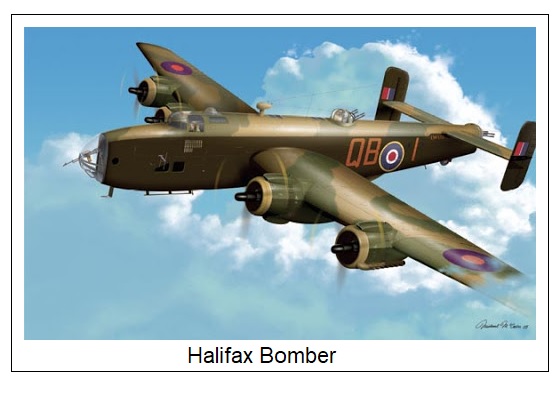
Additional promotions came Sergeant Bassett's way, and he received his Commission as a Rear Gunner on February 20th, 1944. According to the family of another RCAF Veteran's on-line blog entitled, The Med, the mad and the Mod Rear Gunners were affectionately tagged as 'Tail End Charlie' -- their primary role was, "... to be a lookout: to defend his aircraft from enemy fighter attack from the rear of the plane and to warn the pilot when to undertake evasive maneuvers." (See link reference below). As the plane's on board spotter, it was the Rear Gunner's responsibility to first identify any nearby or incoming enemy planes. His acute observation skills and his alertness unquestionably could be the difference between survival or certain death for everyone.
Rear Gunners of the Glenn Bassett era also described their in-flight working conditions; the Nose, Dorsal & Tail Turrets consisted of a sheet of drafty clear see-through Perspex which surrounded them. The tiny enclosures were isolated from the other crew while bitter cold and loneliness were their only companions. The Rear Gunner had not a single moment to relax as he was responsible for every soul on board. The family Blog said, "... they would have known that their position often put them first in line for elimination by the enemy fighter planes, who tended to attack from the rear and under the belly of the bomber, so that they could attack without fear of being shot at. According to the Yorkshire Air Museum, 20,000 Rear Gunners lost their lives during WWII." (See link reference below). One cannot begin to fathom the fear, sickness, nervousness and trepidation which the flight crew must have felt each time they departed for a sortie over enemy territory.

Combat Reports described the suspense of in-flight patrols involving Glenn Bassett, but only two are told here. The first Combat Report said, "While on operations to Hamburg on the August 21, 1943, Bassett's Halifax aircraft of 428 Squadron was attacked by two enemy fighters, identified by the Rear Gunner [Bassett] as Me.109's. It was 0146 hours. The Halifax was flying on a course at 19,000 feet altitude at 180 m.p.h. Visibility was fair with cloud above and below. The enemy fighters were first sighted on the port and starboard quarters, the one on the starboard quarter above carrying a light and the one on the port quarter below without a light, both at 600 yards range. This range was verified, as it gave warning at the time of visual contact and was set at 600 yards. The fighter on the port quarter attacked first and Rear Gunner Bassett gave combat maneuver turn port and dives the range closed to 400 yards, both the fighter and Rear Gunner Bassett opened fire, the Rear Gunner firing two bursts, the tracer from the fighter passing well to starboard. As the Halifax completed the diving turn, both fighters were lost to view."
Afterwards, the Halifax carried on and having bombed the target, was attacked again at 0200 hours by a fighter identified by the Rear Gunner Bassett as a Ju.88. On this attack, the Halifax was flying a course at 16,000 feet altitude, and 180 m.p.h. Visibility was fair with cloud above and breaks in the cloud underneath, the tops of which were at 13,000 feet. The fighter was first sighted dead astern as above at 600 yards, no lights were carried by this fighter. Rear Gunner Bassett gave combat corkscrew and as the fighter closed to 400 yards, Rear Gunner Bassett opened fire with one burst, with no return fire from the fighter. The combat maneuver taken carried the Halifax into cloud and the fighter was not seen again." On this occasion, Glenn Bassett and his crew might have been lucky to escape but it was well known that bombers took more enemy fire than most other aircraft.
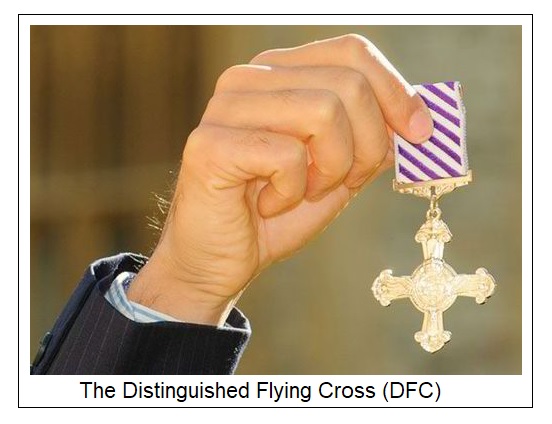
Glenn Alvin Bassett retired from the RCAF in 1945. He was awarded the Distinguished Flying Cross (DFC) for the demanding and dangerous service in No. 428 Squadron RCAF during WWII. The DFC was a very rare honour and a very high compliment to DFC recipients. Due to the rare honour of the Award, it is important to include the recommendation for Glenn Bassett's DFC as well as the citation which accompanied the Award. One cannot overlook the significance of the DFC and the deserving credit it brought to Glenn Alvin Bassett's life.
The Recommendation for the DFC by W/C W.A.G. McLeish dated 13 July 1944, said, "When he [Glenn Alvin Bassett] had flown 34 sorties (225 hours) as follows: As Tail Gunner, Pilot Officer Bassett has completed a very successful tour of operations, having attacked targets in Germany and France and having completed numerous mine laying operations. His keenness and above average ability contributed materially to the success enjoyed by his crew. On several occasions his vigilance and skillful directions enabled the pilot to take the proper evasive action and so avoid attack by enemy night fighters.
On one occasion when returning from a German target an attack by a night fighter appeared imminent. He opened fire and shot down the attacker. On another occasion he probably destroyed an enemy night fighter over France. For reliability and keenness and for the completion of a very satisfactory tour, I recommend the immediate award of the DFC."
His DFC was effective September 19th, 1944 as per the London Gazette.
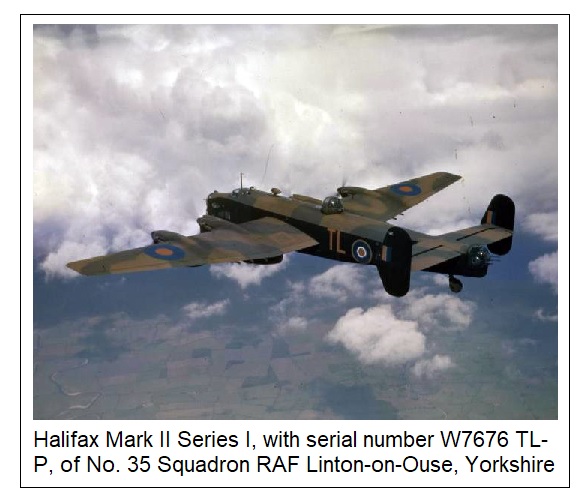
Glenn Alvin Bassett's Citation said, "This Officer, as Rear Gunner, has participated in many sorties against objectives in Germany and France; he has also completed numerous mine-laying operations. On several occasions his vigilance and skillful evading directions have enabled his pilot to frustrate enemy fighters."
Little more could have been asked of Glenn Alvin Bassett. His bravery was no less than unbelievable. He escaped death several times throughout his RCAF career, Glenn Bassett's skills as a Rear Gunner must have been superb.
After the war, Glenn Bassett returned home to Canada. In 1950, he joined the British Columbia Provincial Police (BCPP) which was absorbed into the RCMP in 1952. At the time of the BCPP & RCMP amalgamation, Glenn Bassett was serving in Richmond, BC. Glenn went on to serve honourably as an RCMP Sergeant. He retired from the RCMP in 1972.
Glenn Alvin Bassett displayed unquestionable bravery with the RCAF, and he also served a long and successfully career in the RCMP. Glenn Bassett died in Kelowna in 2012 at the age of 89. He was buried in Kelowna Memorial Park Cemetery. Canadians will forever be grateful to and appreciative of the men and women who served in the Armed Forces during WWII. Glenn Bassett's life was one of bravery and devotion.
I first met Ron Sheppard under the most unusual of circumstances many, many years ago. It was lunch hour, and it was time for some card tricks. You see, Ron Sheppard was on duty, but he also was playing cards. I was an observer, I was not in the game. Ron Sheppard was Canada's gambling expert, and for many, many years he taught police officers lessons in card mastery. Within police circles, Ron Sheppard was reputed to be as skillful with playing cards as Houdini was with chains and a padlock.
I have fond memories of having met Ron Sheppard, and I thank him for contributing to the short story about his friend Sergeant Glenn Alvin Bassett. WWII, DFC, RCAF & RCMP.
Reporting from Fort Healy,
J. J. Healy
August 23, 2020
Blog: The Med, the mad and the Mod
https://themedthemadandthemod.com/tag/life-expectancy-of-a-rear-gunner/

